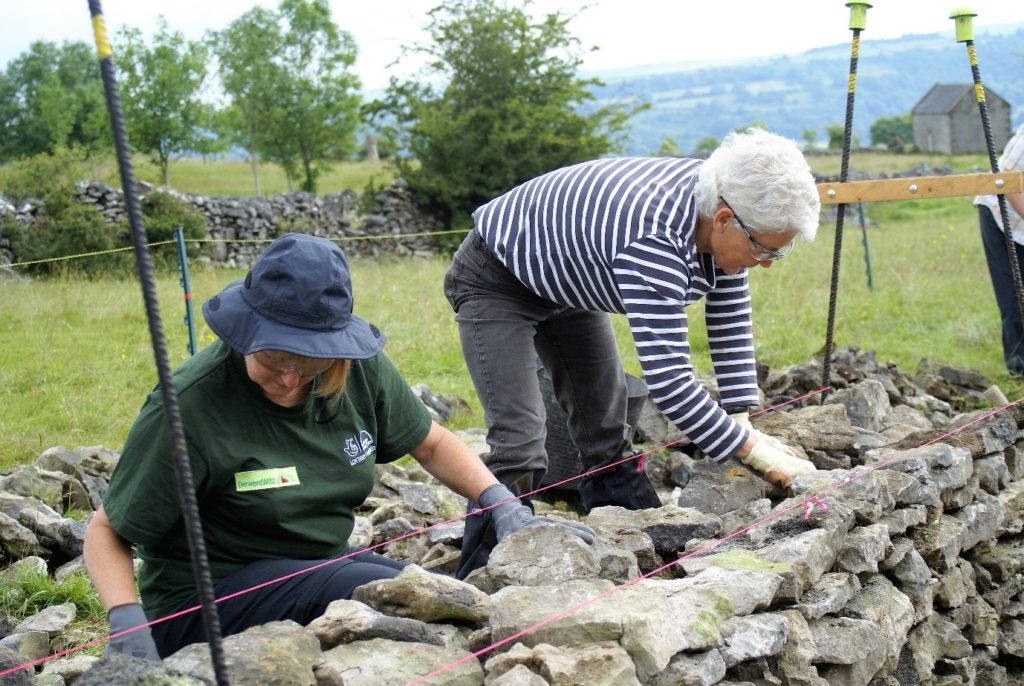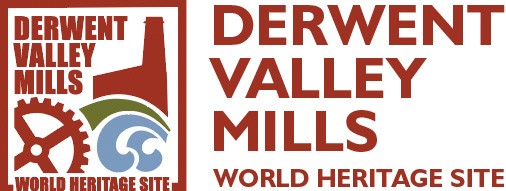Cultural Heritage Projects

Cultural Heritage
Grand mills and weirs are what give the Derwent Valley its world heritage site status, but the cultural heritage is just as important. Field barns and dry-stone walls are found in abundance in the surrounding landscape.
Annice Fuller started as the DerwentWISE Cutural Heritage Officer, preceded by Rachel Costigan who joined the team two years in.
Volunteers played a crucial role in going out into the landscape and capturing data. We trained over 170 volunteers to survey heritage assets. They went on to complete more than 1,000 surveys that were fed into the Historic Environment Records (HER) data base.
We’d like to thank all of the volunteers for their contribution to the project and in helping to make DerwentWISE a success.
We repaired dry-stone walls, over 800 metres in total, and surveyed all of the field barns in the Middleton area. Small grants of up to £5,000 were awarded and these also mainly went on repairing dry-stone walls.
Duffield Castle – The footprint of Duffield Castle capped with crumbling tarmac tells little about the mediaeval fortress that once stood there. Over time archaeological digs have helped piece together some of its history. DerwentWISE commissioned the Jessop Consultancy to do a reappraisal of the studies, gathering together all the findings. This was followed with an options appraisal by Arc Heritage and In Heritage. It identified the possibility of ‘soft capping’ with turf to stabilise the tarmac and masonry below, as well as suggesting some ideas for improving the site for visitors.
Installing the soft capping was beyond the DerwentWISE budget and time constraints. However, we were able to make improvements to help visitors feel welcomed, and prepare them for what they can experience on site. Duffield Castle also featured at the Duffield Arts festival with performances that reflected the Castle’s History.
University of Derby students based a project around the Castle’s Hand produced an exhibition of interpretative artwork that was displayed at a consultation event and DerwentWISE’s final celebrations at Derby Theatre and Cromford Mills.
Aqueduct cottage – A much loved landmark on the bank of the Cromford Canal, the picturesque cottage was falling into a ruinous state. Mansell Architects produced a survey and options appraisal as part of the development phase of DerwentWISE. We followed this by commissioning a Structural Condition Report.
One of our volunteers, Ron Common, dedicated himself to the project and carried out extensive research to build a business case for the restoration of the cottage to be used as a ‘gateway site’ to the Derbyshire Wildlife Trust Lea Wood reserve, amongst others.
Meanwhile the landscape conservation volunteer team carefully extracted self-set trees from the ruin which were threatening the remaining fabric of the building. A sink hole drained the section of canal in front of the cottage, allowing Ron to retrieve some of the masonry that had been lost to the canal bed. Heritage builder Andrew Churchman carried out repairs to stabilise the stonework. Local artists Abigail Sawyer, Ruth Gray, Mandy-Jayne Alhors and Joanna McPherson created paintings to cheer up the boarded up windows.
Field Barns – Field barns, along with drystone walls, are a distinctive feature of the DerwentWISE landscape, especially around the village of Middleton By Wirksworth. Often in disuse and frequently falling into disrepair, we wanted to make a record of the barns before they are lost.
Once our volunteers were trained and the surveys were completed, we sought a barn to repair. After pursuing two options that would have been repurposed for community use, we settled on a highly visible barn in an area much frequented by local walkers.
Dry stone walls – Dry stone walls are an iconic part of the heritage of the upland landscape of the Lower Derwent Valley. Many are in a vulnerable condition, which means there is a risk of losing part of the character of the area, along with the historic field patterns they preserve. The project aimed to survey and record sections of wall to assess their condition. It also sought to complete repairs to walls within the project area.
The project focused on two study areas around the village of Middleton-by-Wirksworth. Both contained walls built pre-Enclosure Act that preserve mediaeval field patterns. Changes in farming practices mean that many of these walls are now redundant for stock control: The historic map shows that one study area that is now grazed as one enclosure would once have been made up of around 23 small fields.
High Peak Junction – The wheel resting in a pit at High Peak Junction was part of an ambitious solution to create a transport route across the Pennines. Originally part of the canal system, the Cromford and High Peak Railway used inclines instead of locks to move goods over the hills.
The wheel and pit with its tensioning gear was stripped, restored repaired and replaced. An exhibition in the nearby brake vans explains how a cable wound round the wheel to move the wagons up and down the incline.
Weir Watchers – With water power at the centre of the Derwent Valley Mills World Heritage Site, the weirs and associated structures along the Derwent are essential attributes of the World Heritage Site designation. It’s important for the DVMWHS to know what condition they are in and whether they, and therefore the World Heritage Site is at risk.
We set out to undertake engineering surveys and monitoring of two – Rock weir in Belper and Foundry weir in Milford, but ultimately were able to extend the project to cover the key weirs along the Derwent within the World Heritage Site.
Slinter mill pond – The Slinter Ponds are a series of water-management features provided to assist in the operation of water-mills along the lower part of the Via Gellia. They date from the late 18th century. Early maps indicate the general size and extent of the ponds, although they are of insufficient scale to identify the position of sluices and other features. Since their disuse in the 1930s the ponds / sluices have silted up and are overgrown with dense vegetation.
We commissioned a survey to audit the surviving features. Archaeological recording contributes to the conservation, understanding and interpretation of historic water-management along this section of the Via Gellia.
Cultural heritage grants – This project sought to provide a fund to assist in restoring, conserving or maintaining heritage assets which were identified with the Heritage at Risk Programme or other heritage assets which needed financial investment that were identified by local landowners or community groups as assets to their local heritage.

Duffield Castle
Improvements to site of Duffield Castle to welcome visitors and prepare them for what they can experience on the site

Field Barns
Field Barns and drystone walls are a distinctive feature of the Derwent Valley - this project trained volunteers to survey barns and repair one of them

Dry Stone Walls
The Dry Stone Walls project aimed to survey and record sections of wall to assess their condition and complete repairs in the project area

High Peak Junction project
High Peak Junction project to restore, repair and replace the wheel and pit and produce and exhibition in the brake vans

Weir Watchers Project
Weir watchers project undertook engineering surveys and monitoring or Rock weir in Belper and Foundry weir in Milford and other key weirs

Slinter Mill Pond project
Slinter Mill Pond project commissioned a survey to audit the surviving features to contribute to conservation, understanding and interpretation of the pond

Cultural Heritage Grants
Cultural heritage grants assisted in restoring, conserving or maintaining heritage assets identified in the Heritage at Risk project

Aqueduct Cottage
Aqueduct Cottage project looked at options for this much loved landmark on Cromford Canal and started the work of renovation and repair

